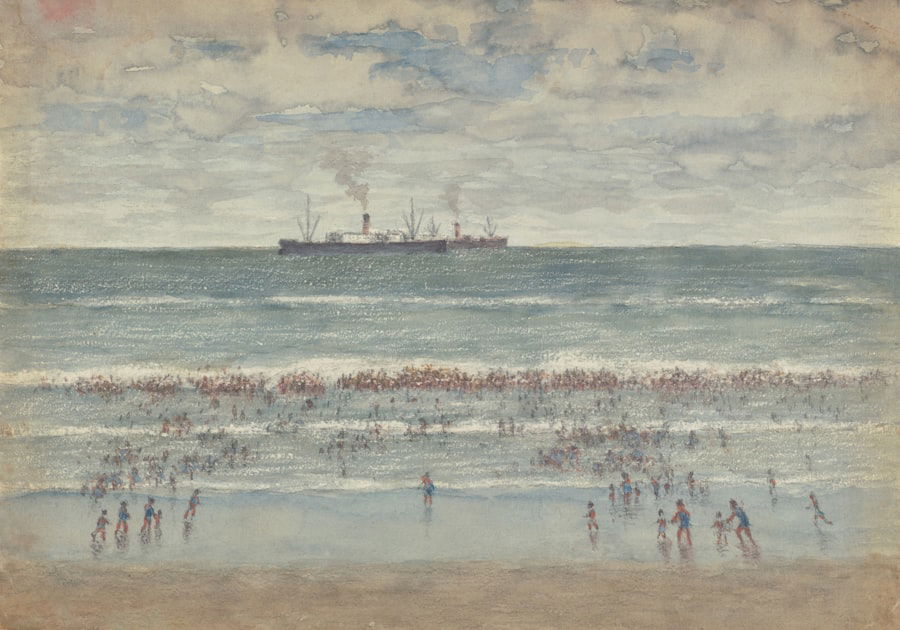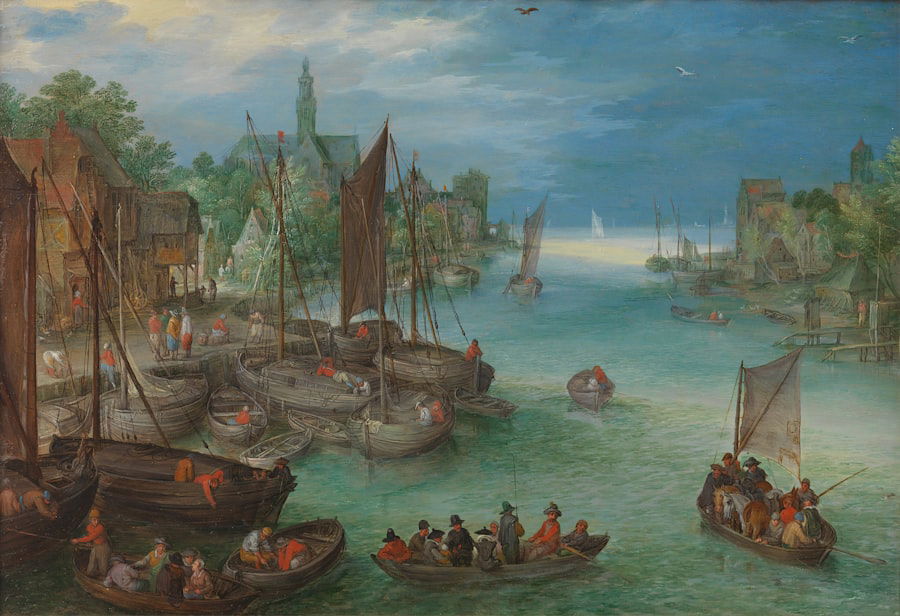Terence Cuneo was born in London in 1907 to a family with a strong artistic background. His father, Cyrus Cincinato Cuneo, was an accomplished artist, and his mother, Nell, was a skilled musician. Cuneo exhibited a natural aptitude for drawing and painting from a young age, leading him to pursue an artistic career.
He received his education at Chelsea Polytechnic and later at the Slade School of Fine Art, where he refined his techniques and developed his distinctive style. Cuneo’s professional career began as an illustrator for publications such as the Illustrated London News and the Radio Times. His career trajectory changed significantly during World War II when he served as a war artist.
Commissioned as a second lieutenant in the Royal Engineers, Cuneo’s wartime experiences greatly influenced his future work as a military artist. Following the war, he continued to gain recognition for his art, becoming renowned for his ability to accurately depict military scenes with exceptional detail and intensity. The early life and career of Terence Cuneo established the groundwork for his later success as a military artist.
His innate talent, coupled with his World War II experiences, shaped his unique artistic approach and established him as a prominent figure in military art of his era.
Key Takeaways
- Terence Cuneo was born into an artistic family and began his career as a military artist during World War II.
- Cuneo’s military art was heavily influenced by his experiences as a sapper in the Royal Engineers, capturing the realism and drama of military life.
- Known for his meticulous attention to detail and use of vibrant colors, Cuneo’s unique style brought a sense of life and energy to his military artworks.
- Some of Cuneo’s most notable military artworks include “The Battle of Britain” and “The Battle of Waterloo,” which are celebrated for their historical accuracy and emotional impact.
- Cuneo’s military art has had a lasting impact on how military history is depicted, influencing future generations of artists and shaping public perceptions of historical events.
The Influence of Military Art on Cuneo’s Work
Developing a Keen Eye for Detail
Cuneo’s time as a war artist also allowed him to develop a keen eye for detail and accuracy in his work. He was known for his meticulous research and attention to detail, often spending hours studying military equipment and uniforms to ensure that his paintings were historically accurate. This dedication to accuracy set Cuneo apart from other military artists of his time and earned him a reputation for producing some of the most realistic and authentic military art of the 20th century.
Influencing His Unique Style
The influence of military art on Cuneo’s work is evident in the dramatic and intense scenes he captured in his paintings. His experiences during World War II shaped his unique style and set him apart as one of the most influential military artists of his time.
A Lasting Legacy
Cuneo’s work as a war artist not only influenced his own style but also left a lasting legacy in the world of military art. His dedication to accuracy and attention to detail have inspired generations of military artists, and his paintings continue to be celebrated for their realism and authenticity.
Cuneo’s Unique Style and Techniques in Military Art

Terence Cuneo’s unique style and techniques set him apart as one of the most influential military artists of the 20th century. His paintings are characterized by their dramatic compositions, intense action scenes, and meticulous attention to detail. Cuneo had a remarkable ability to capture the chaos and intensity of battle, as well as the human experience of war, in a way that few other artists could.
One of Cuneo’s signature techniques was his use of light and shadow to create depth and drama in his paintings. He often used bold contrasts of light and dark to highlight the action in his scenes, creating a sense of movement and energy that drew the viewer into the heart of the action. This technique, combined with his meticulous attention to detail, gave Cuneo’s paintings a sense of realism and authenticity that set them apart from other military art of his time.
Cuneo also had a talent for capturing the human experience of war in his paintings. His depictions of soldiers in action were often filled with emotion and intensity, conveying the fear, courage, and determination of those who fought in battle. This ability to capture the human element of war set Cuneo apart as a truly exceptional military artist.
Terence Cuneo’s unique style and techniques made him one of the most influential military artists of his time. His ability to capture the drama and intensity of battle, combined with his meticulous attention to detail and his talent for conveying the human experience of war, set him apart as a truly exceptional artist.
Notable Military Artworks by Terence Cuneo
| Artwork Title | Year | Medium | Dimensions |
|---|---|---|---|
| The Battle of Britain | 1969 | Oil on canvas | 152.4 x 213.4 cm |
| The Battle of Jutland | 1975 | Oil on canvas | 152.4 x 213.4 cm |
| The Battle of Trafalgar | 1965 | Oil on canvas | 152.4 x 213.4 cm |
Terence Cuneo created numerous notable military artworks throughout his career, many of which have become iconic representations of military history. One of his most famous paintings is “The Battle of Britain,” which depicts a dramatic aerial dogfight between British and German aircraft during World War
Another notable work by Cuneo is “The Battle of Waterloo,” which depicts the historic battle between Napoleon’s forces and the British army. This painting is filled with dramatic action scenes, capturing the chaos and intensity of one of the most significant battles in European history. Cuneo’s meticulous attention to detail is evident in this painting, with every soldier and horse depicted with remarkable accuracy.
In addition to these famous works, Cuneo also created numerous other paintings and illustrations that captured the drama and intensity of military life. His ability to convey the human experience of war, combined with his talent for capturing the chaos and intensity of battle, made him one of the most celebrated military artists of his time.
Cuneo’s Impact on Depicting Military History
The Iconic Representation of Military History
Cuneo’s paintings have become iconic representations of key moments in military history, providing viewers with a vivid and realistic glimpse into the chaos and intensity of battle. His artwork has been instrumental in shaping the public’s perception of military history, offering a unique window into the past.
A Lasting Impact on Historical Commemoration
Cuneo’s work has also had a lasting impact on how military history is remembered and commemorated. His paintings have been used in numerous historical publications, documentaries, and exhibitions, helping to bring key moments in military history to life for new generations. By conveying the human experience of war, Cuneo’s artwork has helped to humanize historical events, allowing viewers to connect on a deeper level with the individuals who fought and sacrificed during times of conflict.
A Profound Influence on Military Art
Overall, Terence Cuneo’s impact on depicting military history has been profound. His ability to capture the drama and intensity of battle, combined with his meticulous attention to detail and his talent for conveying the human experience of war, has made him one of the most influential military artists in history.
Recognition and Legacy of Terence Cuneo’s Military Art

Terence Cuneo’s military art has received widespread recognition and acclaim, earning him a lasting legacy as one of the most influential military artists of the 20th century. Throughout his career, he received numerous awards and honors for his work, including being appointed as an official war artist during World War
Cuneo’s legacy also lives on through the continued popularity and relevance of his work. His paintings have become iconic representations of key moments in military history, providing viewers with a vivid and realistic glimpse into the chaos and intensity of battle. His ability to convey the human experience of war has also helped to humanize historical events, allowing viewers to connect on a deeper level with the individuals who fought and sacrificed during times of conflict.
Overall, Terence Cuneo’s recognition and legacy as a military artist are well-deserved. His impact on depicting military history, combined with his unique style and techniques, has solidified his place as one of the most influential artists in the genre.
The Enduring Appeal of Cuneo’s Military Art
The enduring appeal of Terence Cuneo’s military art can be attributed to several factors. Firstly, his ability to capture the drama and intensity of battle in a realistic and authentic way has made his paintings timeless representations of key moments in military history. Viewers are drawn to the vivid action scenes depicted in his work, which provide a glimpse into the chaos and intensity of war.
Additionally, Cuneo’s talent for conveying the human experience of war has helped to humanize historical events, allowing viewers to connect on a deeper level with the individuals who fought and sacrificed during times of conflict. His paintings evoke emotion and empathy, making them relatable to audiences across generations. Furthermore, Cuneo’s meticulous attention to detail and dedication to historical accuracy have contributed to the enduring appeal of his work.
His paintings are not only visually stunning but also serve as valuable historical records that provide insight into key moments in military history. In conclusion, Terence Cuneo’s military art continues to captivate audiences around the world due to its timeless depiction of key moments in military history, its ability to convey the human experience of war, and its historical accuracy. His legacy as one of the most influential military artists of the 20th century is secure, and his work will continue to be celebrated for generations to come.
If you’re interested in the intersection of art and technology, you may also enjoy reading about the challenges of genuine photography in a technological age. This article explores how advancements in technology have impacted the authenticity of photography and the implications for businesses and consumers. Check it out here.
FAQs
What is Terence Cuneo known for?
Terence Cuneo was a renowned British artist known for his military and railway art. He was particularly famous for his detailed and realistic depictions of military scenes and equipment.
What was Terence Cuneo’s background?
Terence Cuneo was born in London in 1907 and came from a family of artists. He studied at the Chelsea School of Art and later at the Slade School of Fine Art. He served in the British Army during World War II, which greatly influenced his military art.
What type of military art did Terence Cuneo create?
Terence Cuneo was known for creating highly detailed and realistic paintings of military scenes, including battles, equipment, and personnel. His work often depicted historical events and military operations with great accuracy.
Where can Terence Cuneo’s military art be seen?
Terence Cuneo’s military art can be found in various museums, galleries, and private collections around the world. His work is highly sought after by art enthusiasts and military history buffs.
What awards and recognition did Terence Cuneo receive for his military art?
Terence Cuneo was appointed as an official artist for the Coronation of Queen Elizabeth II in 1953 and was later elected president of the Royal Society of British Artists. He also received numerous awards and honors for his contributions to military art and was widely respected in the art community.
